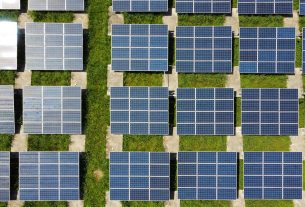In the month of July, solar photovoltaic power matched its best record, contributing to almost a quarter of Spain’s electricity production.
Throughout a very hot July, solar photovoltaic was responsible for nearly a quarter, or 24%, of Spain’s electricity generation. This figure not only matches the highest monthly contribution of this technology but also confirms that the country’s commitment to solar energy continues to bear fruit. After closing May as the leading source of electricity generation for the first time in history, it repeated this achievement in June and did so again in July. During these three months, the production from renewable sources significantly surpassed that of polluting ones.
Moreover, the 24% generation achieved in July came with a total production higher than that of May: 5,645 GWh compared to 5,114 GWh. This means that photovoltaic plants not only remained the primary source of electricity but did so with an increased workload.
While the trend of solar photovoltaic has been upward for years—always increasing its monthly contribution year after year—until 2024, it had never been the primary source of generation, not even during the months with the most sunlight. Traditionally, wind and nuclear power have alternated in this role, with occasional appearances from combined-cycle gas plants. In the past, coal and hydroelectric power also occupied this position.
The data contrasts with two years ago when, despite a record contribution for those months from photovoltaic power, gas had more prominence, particularly in a year concerned about hydrocarbon supply. Last year saw more diversification, with wind, combined-cycle gas, and nuclear power being the main sources each month.
The year 2022 was particularly notable as the energy crisis coincided with several heatwaves (which particularly affected hydroelectric and wind power) and corrosion issues in the French nuclear fleet, increasing electricity exports. All these factors significantly strained the system, leading to a surge in the use of combined-cycle gas plants, which generated 16.8%, 27.8%, and 32% of the electricity in May, June, and July, respectively.
Despite these challenges, the increase in solar power’s contribution is primarily due to the rapid growth in installed capacity: more panels mean more green electricity. In July 2022, the photovoltaic capacity was 17,995 MW, and two years later, it had grown by 50% to 27,099 MW. The goal, outlined in the National Integrated Energy and Climate Plan (PNIEC), is to continue this expansion and reach 76,387 MW by 2030. In fact, the Ministry for the Ecological Transition and the Demographic Challenge recently unlocked nearly 239 projects that add up to 24,870 MW, which should be connected to the grid within the next three years.



